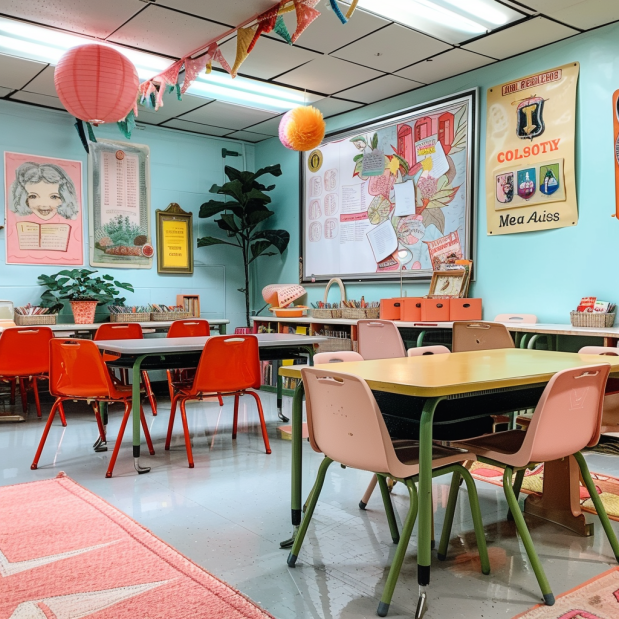Creating a nurturing and stimulating environment for infants in a daycare setting is crucial for their development and safety. A well-planned infant room not only caters to the physical needs of babies but also fosters sensory exploration and emotional security. In this article, we’ll explore 16 innovative ideas for designing an infant room that encourages growth, comfort, and interaction in a daycare.
From vibrant color palettes to safe play areas, every detail contributes to a welcoming atmosphere. Whether you are a daycare provider looking to refresh your space or a parent interested in understanding daycare environments, these infant room ideas will provide inspiration for creating a perfect haven for little ones.
1. Multipurpose Furniture
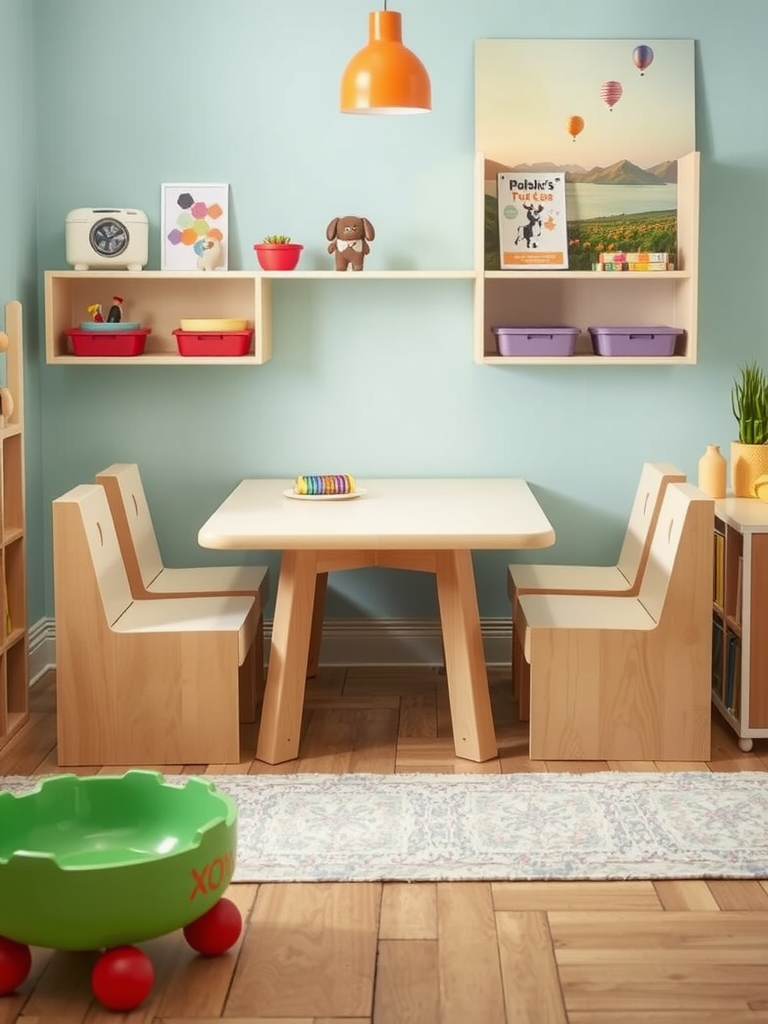
Utilizing multipurpose furniture is a great strategy for small daycare rooms. Look for tables that can be used for various activities, such as arts and crafts, snacks, or group play. Furniture that can be easily moved or rearranged helps in accommodating different activities.
Consider storage ottomans or benches that can double as seating and storage. This way, you can keep toys and supplies out of the way when they’re not in use, making the room feel more organized.
2. Vertical Storage Solutions
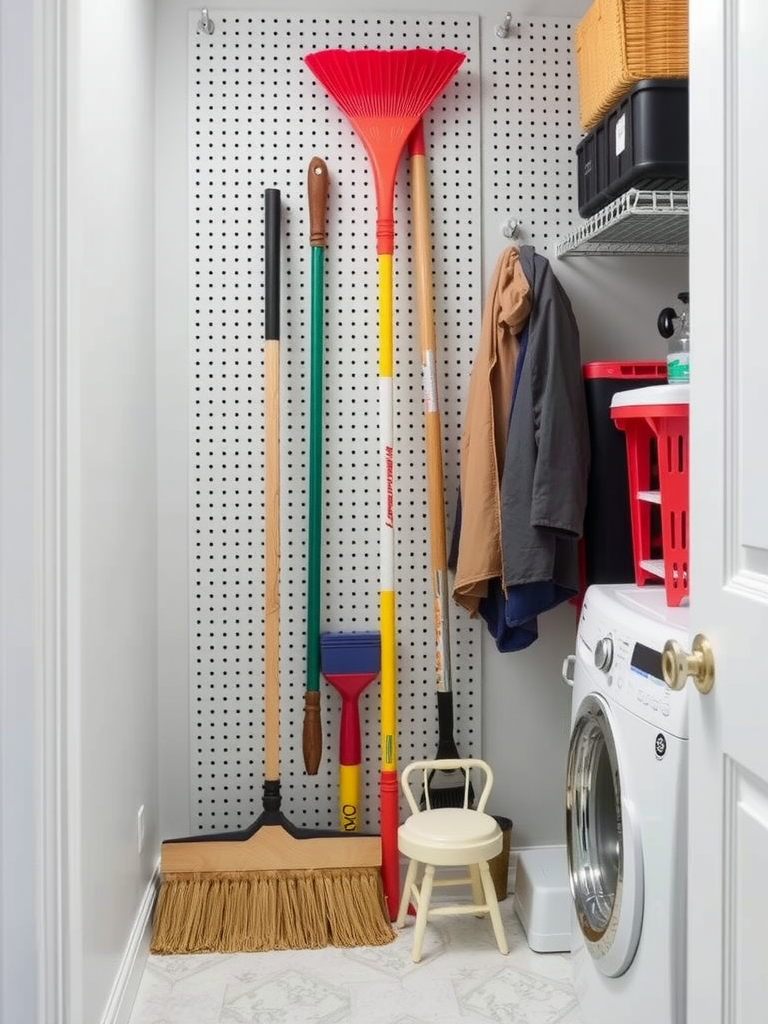
In a small space, it’s vital to take advantage of vertical storage options. Install shelves or cubbies on the walls to hold books, art supplies, and toys. This not only saves floor space but also keeps items accessible for little hands.
Use clear bins or labeled boxes to help children learn organization skills while adding a pop of color to the room. Vertical storage can bring life to the walls, making them functional and visually appealing.
3. Bright and Welcoming Decor
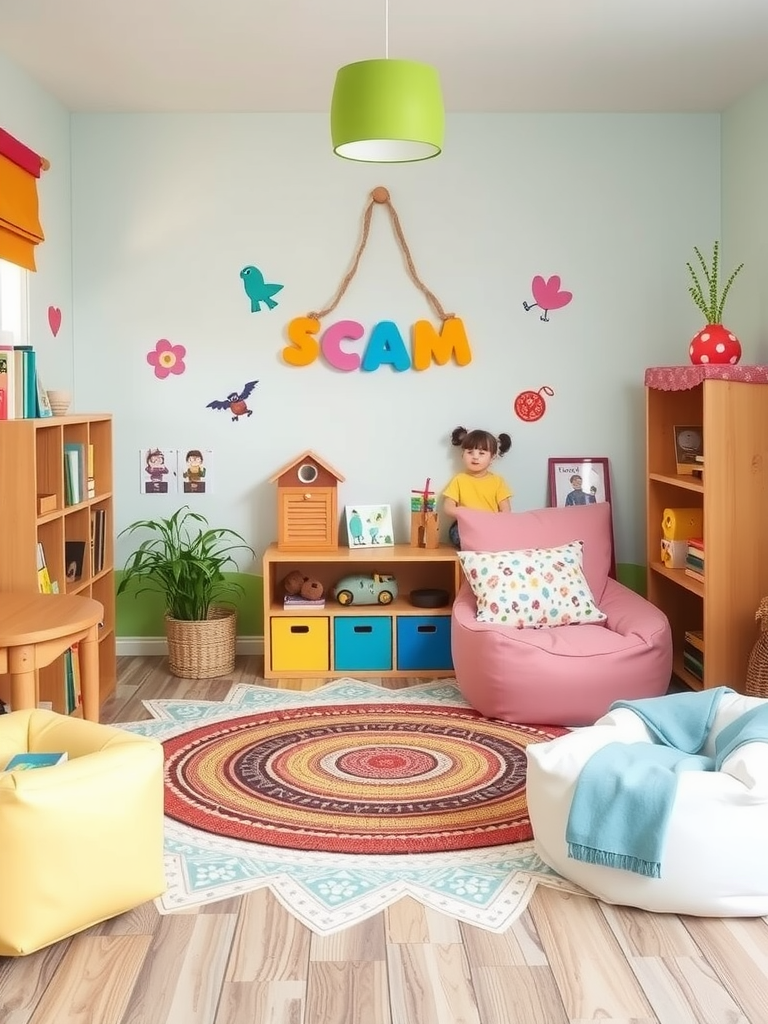
Bright colors and engaging decor can uplift a small daycare room and create a cheerful atmosphere. Use colorful wall decals or murals to bring in lively themes that spark imagination and creativity.
Incorporating soft textures, such as area rugs or bean bags, creates cozy corners for reading or resting, making the environment more inviting for the children.
4. Designated Learning Stations
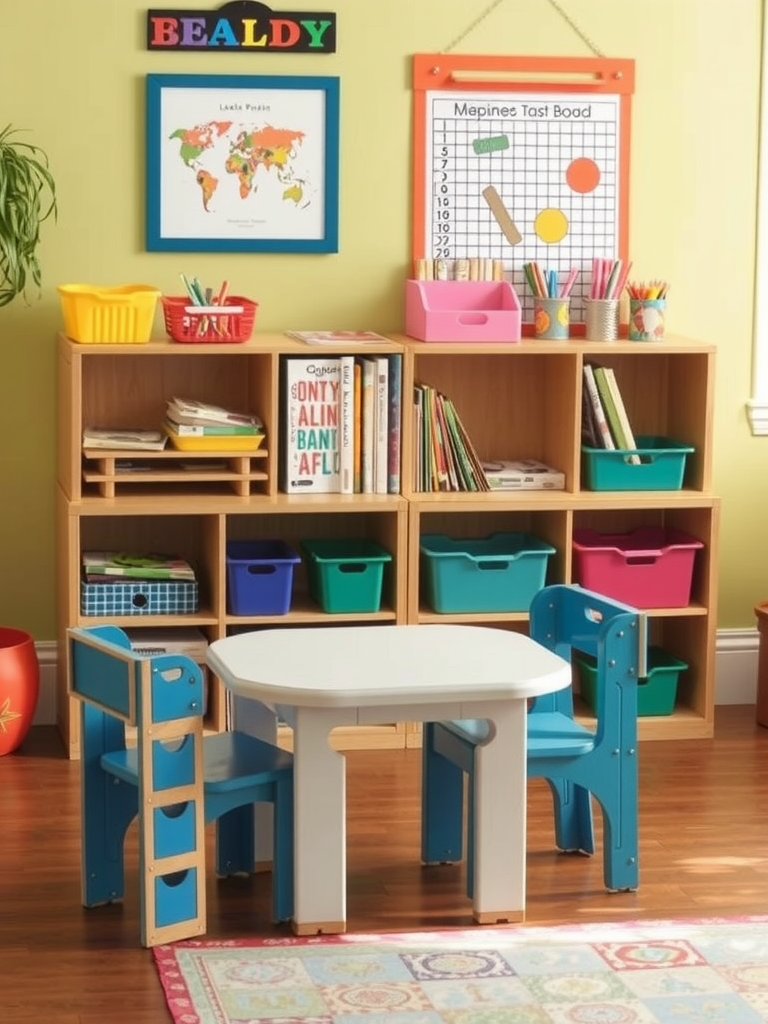
To maximize every inch of space, create designated learning stations for different activities such as reading, arts and crafts, or sensory play. Each station can have its own materials and theme, providing children with a sense of purpose as they rotate through activities.
Label each station clearly to help children understand where to go for specific activities. This organization not only aids in managing the flow of the room but also encourages independent play.
5. Open Floor Plan
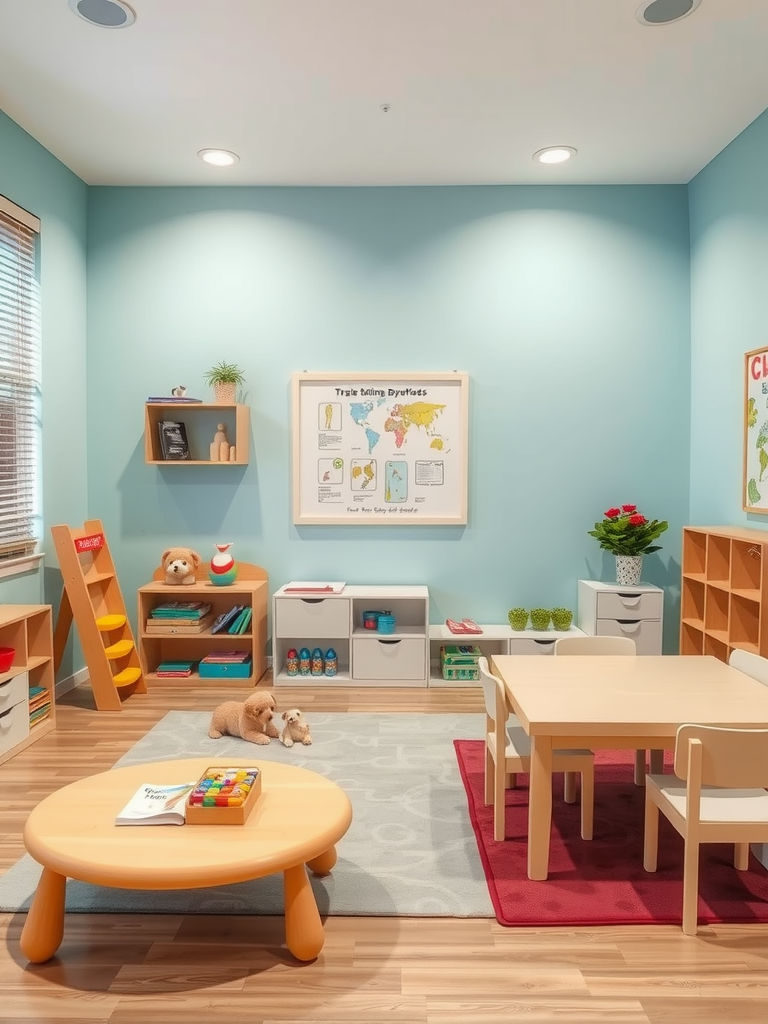
Maintaining an open floor plan is crucial in a small daycare room, allowing free movement for children to explore. Avoid bulky furniture that obstructs pathways, keeping the layout simple and functional.
Using lightweight furniture that can be easily rearranged encourages flexibility, allowing for different activity setups each day and fostering a dynamic learning environment.
6. Nature-Inspired Elements
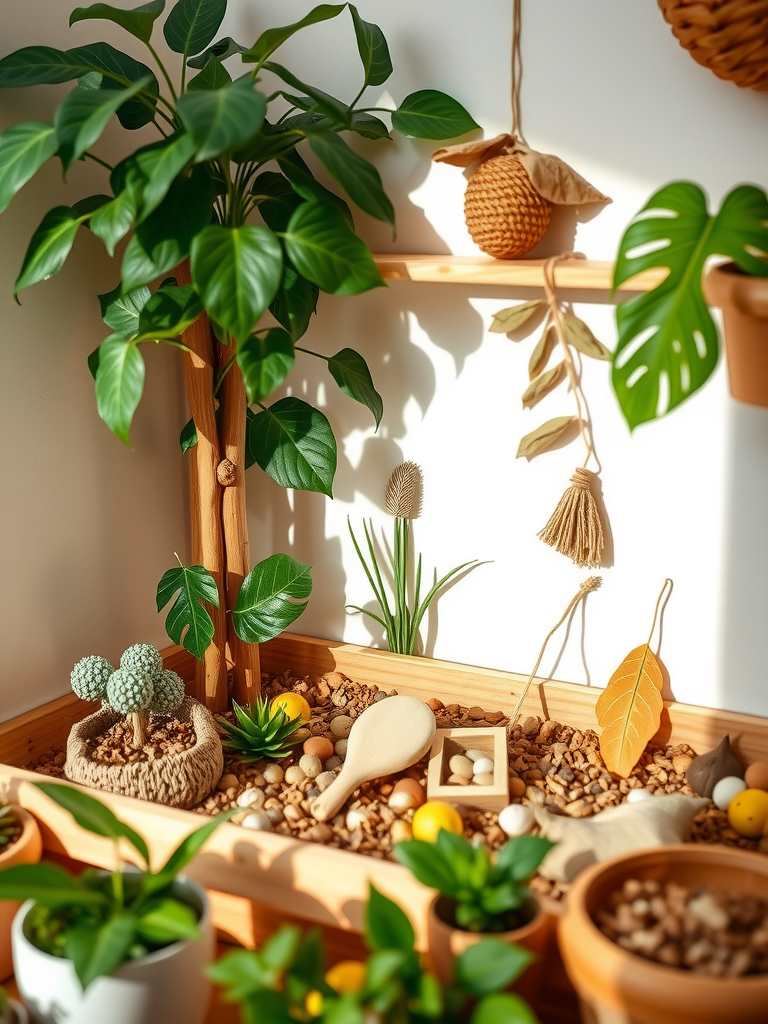
Bringing nature into a small daycare room can create a calming environment. Use plant-themed decor or even real indoor plants that are safe for children. Nature-inspired colors like greens and browns promote a sense of tranquility.
Create a nature corner with sensory bins filled with natural materials like leaves and stones, encouraging kids to engage with the world around them while learning about nature.
7. Activity Walls
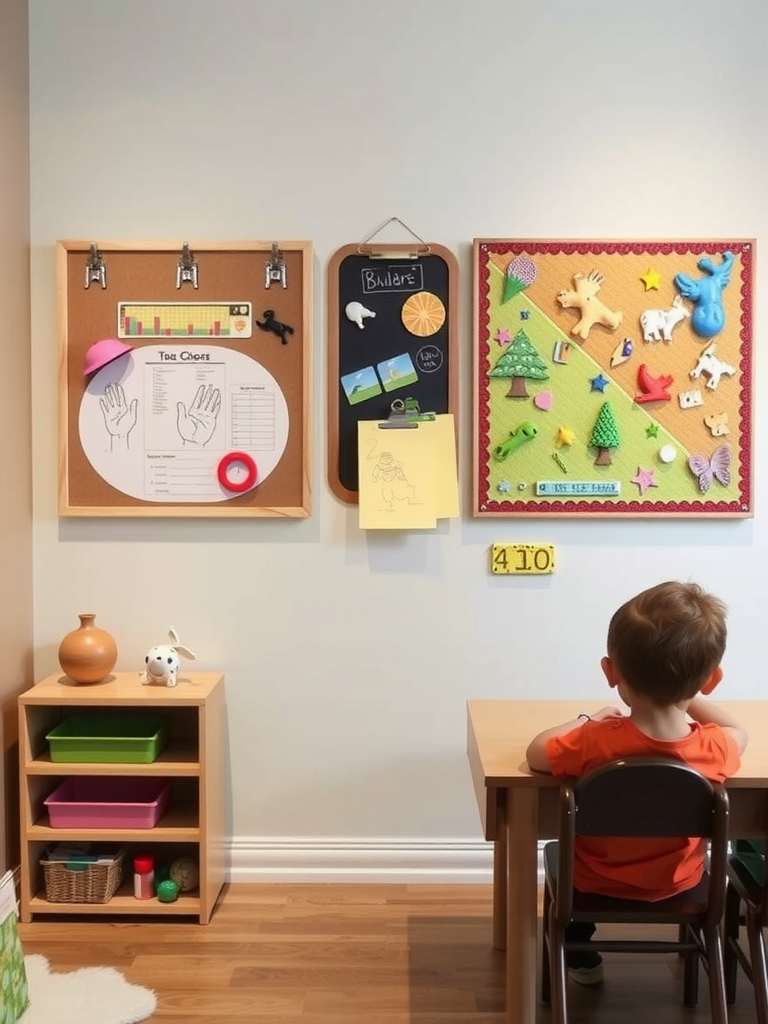
Activity walls are a fantastic way to save space and engage children in learning. Consider installing clipboards, chalkboards, or whiteboards where kids can draw, write, or display their artwork.
Interactive elements like puzzles or texture boards can also be mounted on the wall, balancing fun and learning while keeping the floor area clear for other activities.
8. Soft Play Areas
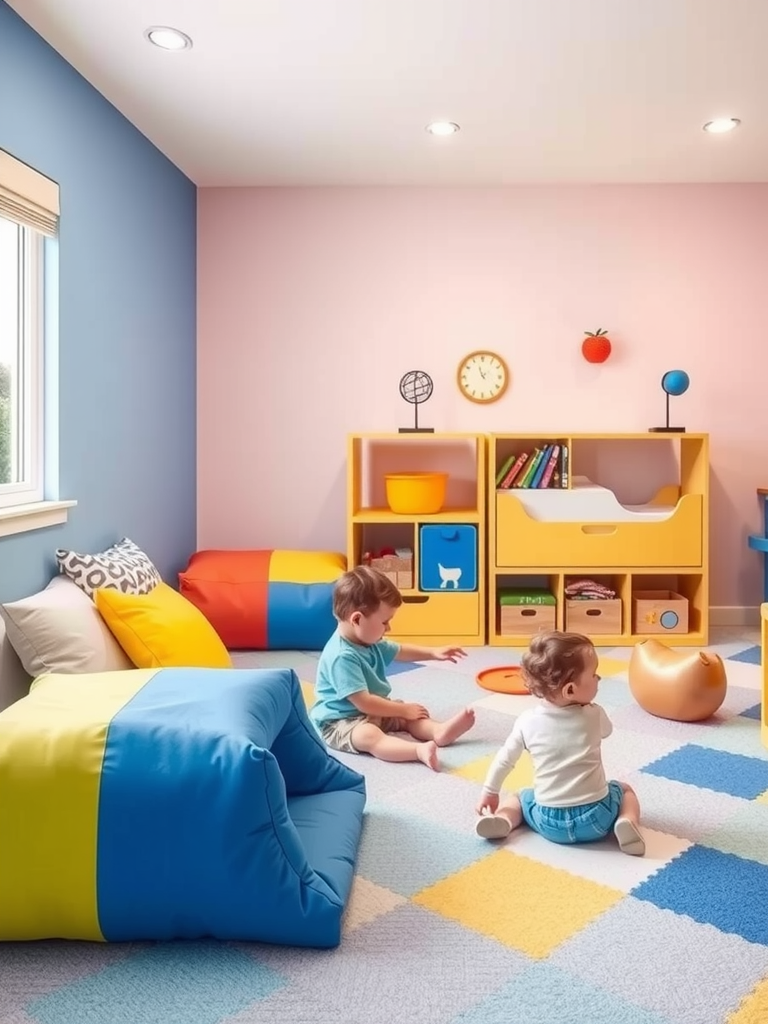
Designate a soft play area within your small daycare room to provide a safe space for active play. Use soft mats, cushions, and low climbing structures to create a stimulating environment where kids can safely explore their physical abilities.
This area can help in managing energy levels and provides an excellent opportunity for social interaction among children.
9. Interactive Story Corner
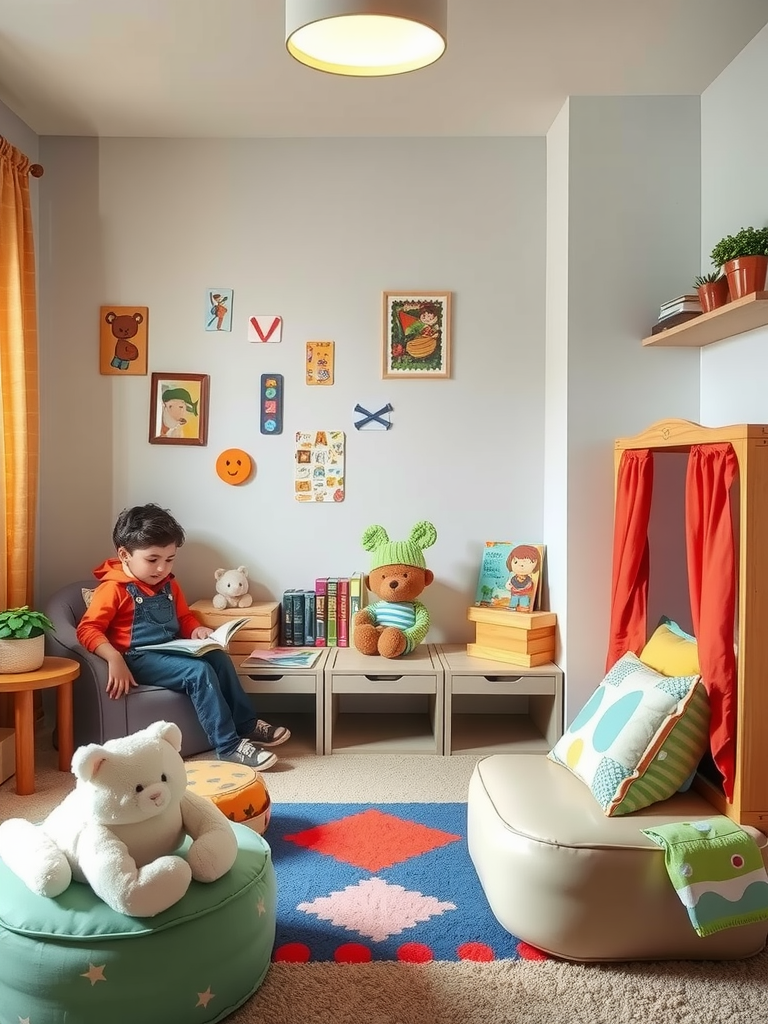
A dedicated story corner is essential for fostering a love of reading. Create a cozy nook with soft seating, cushions, and plenty of books within easy reach. Decorate it with a playful theme to attract children’s attention.
Consider adding a small puppet theater in this area to enhance storytelling sessions and encourage imaginative play, making reading an interactive experience.
10. Incorporate Technology Wisely
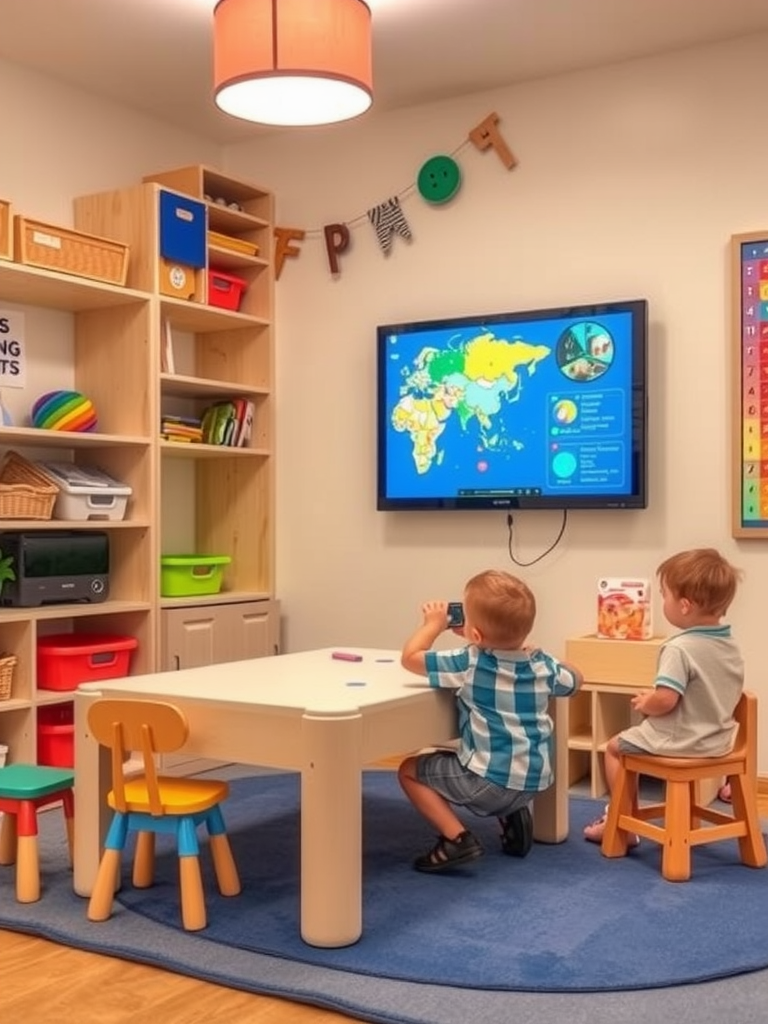
Incorporating technology in a small daycare room must be done thoughtfully. Use tablets or interactive screens as learning tools but keep them in a designated area to avoid distractions during playtime.
Integrate educational apps and games that promote learning in a fun way, ensuring technology complements rather than dominates the learning environment.
11. Color-Coded Organization
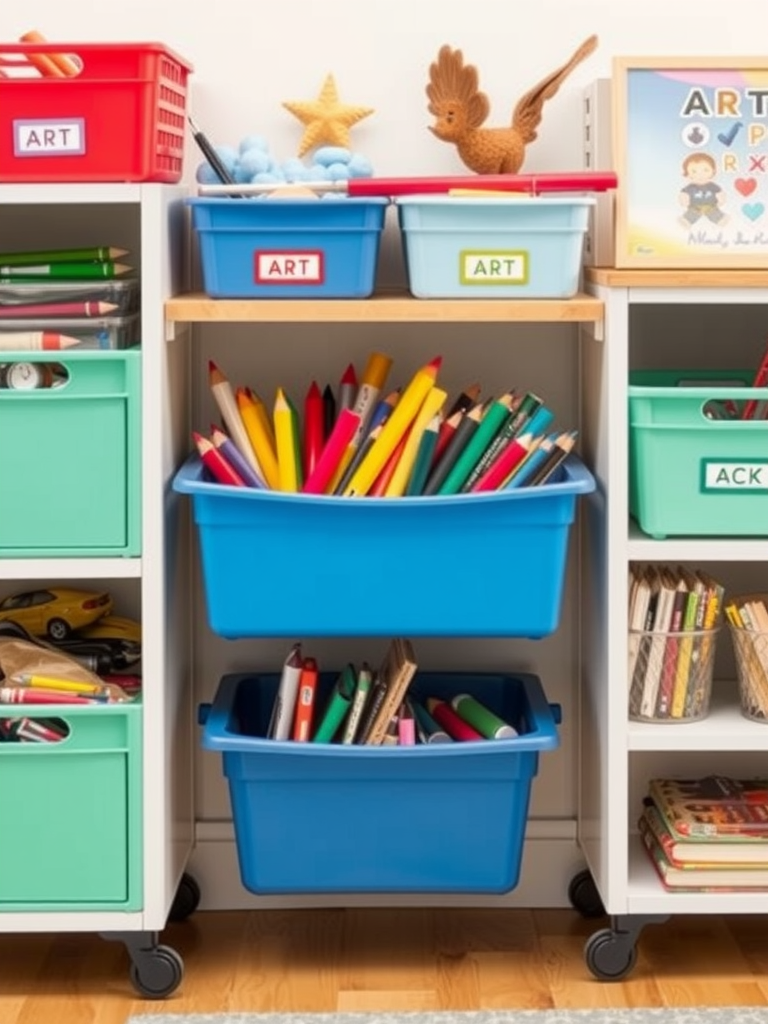
Color-coding storage bins and shelves can help children easily identify where materials belong. Assign different colors to different types of items, such as red for art supplies or blue for books. This system promotes independence and teaches organizational skills.
Additionally, colorful labels can make it visually engaging, encouraging children to take an active role in maintaining the order of their space.
12. Sensory Play Zone
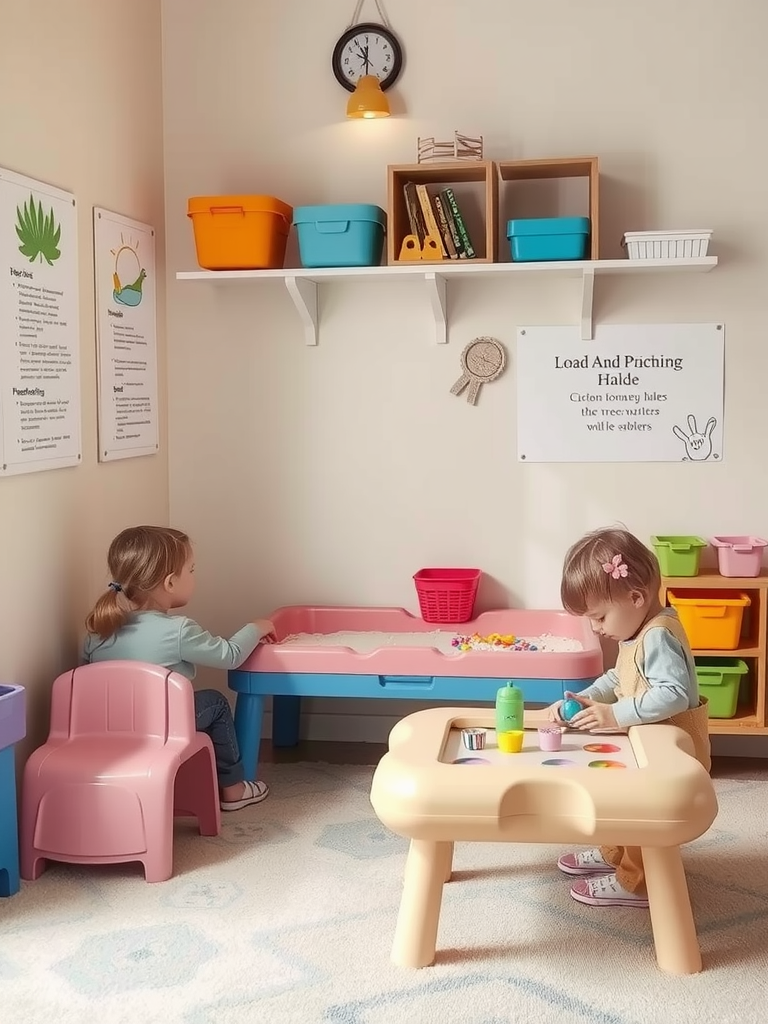
Creating a sensory play zone in a small daycare room can greatly benefit child development. Use bins filled with materials like sand, water beads, or rice for tactile exploration. Sensory tables can be a fun addition that promotes fine motor skills and creativity.
This area can easily be packed away to save space when not in use, allowing for flexibility in how the room is utilized throughout the day.
13. Personalized Space
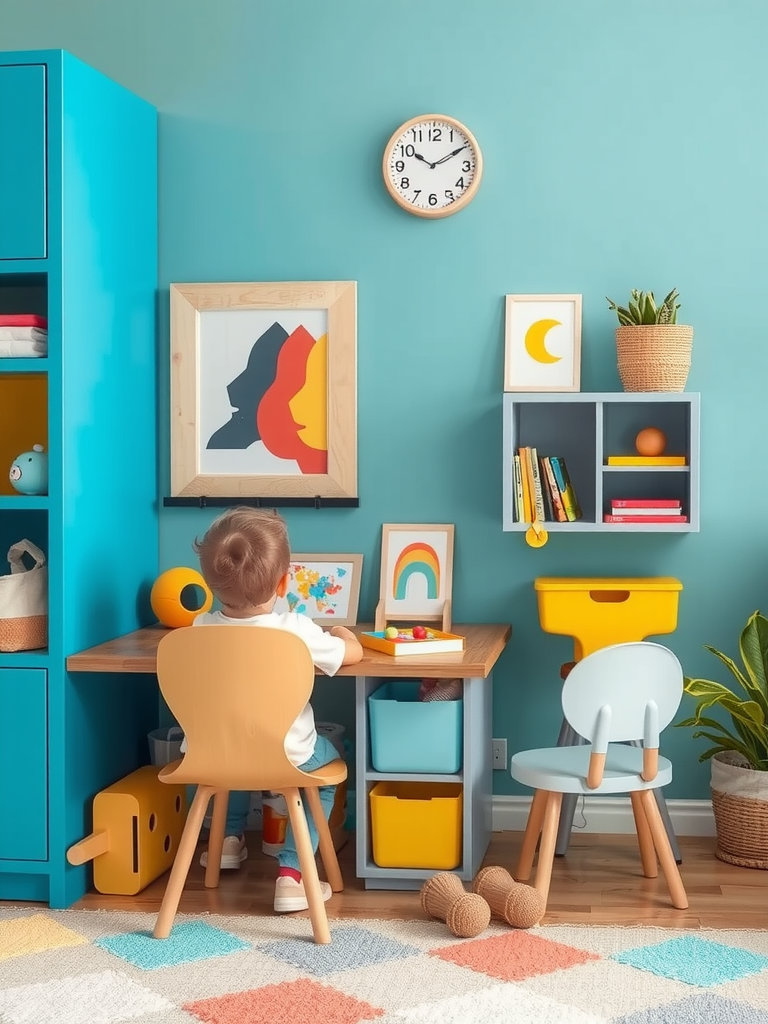
Encouraging children to personalize their space can enhance their sense of belonging. Allow them to bring in items from home or create art to decorate their cubbies or designated areas in the room.
This not only fosters creativity but also gives children a voice in their environment, making them feel valued and comfortable in the space.
14. Outdoor Connection
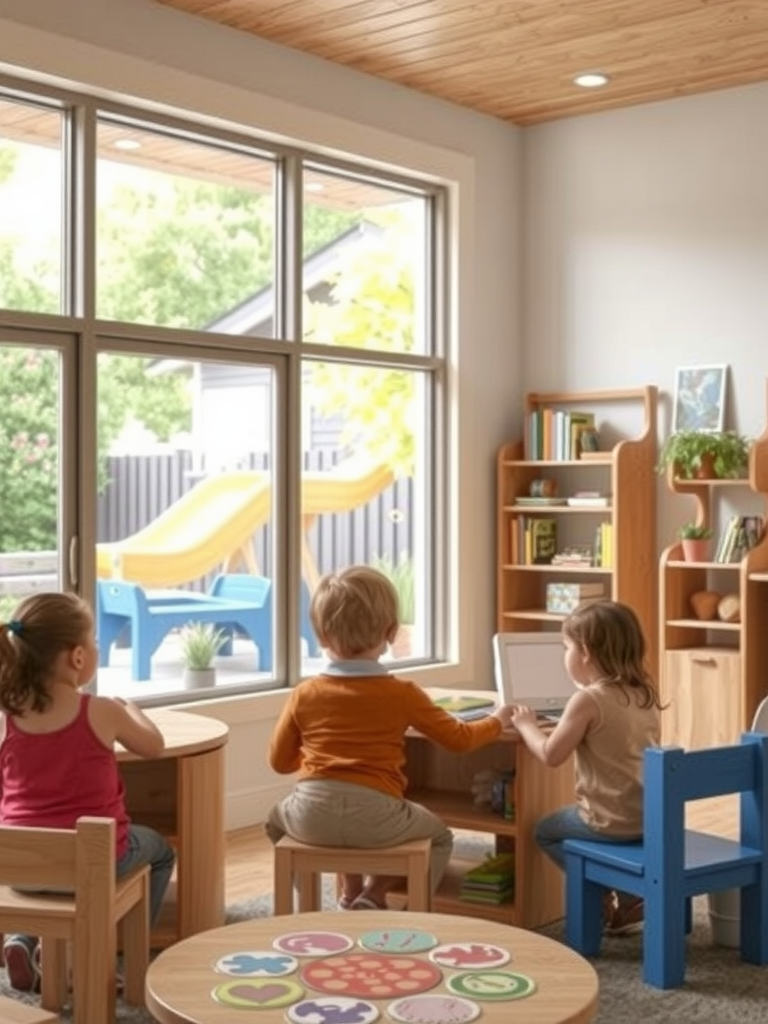
If the daycare has access to outdoor space, creating a seamless connection between indoors and outdoors can enhance play and exploration. Use large windows to bring in natural light and views of outdoor play areas.
Plan outdoor activities that complement indoor learning, ensuring children benefit from both environments while allowing for numerous opportunities for physical activity.
15. Flexible Scheduling
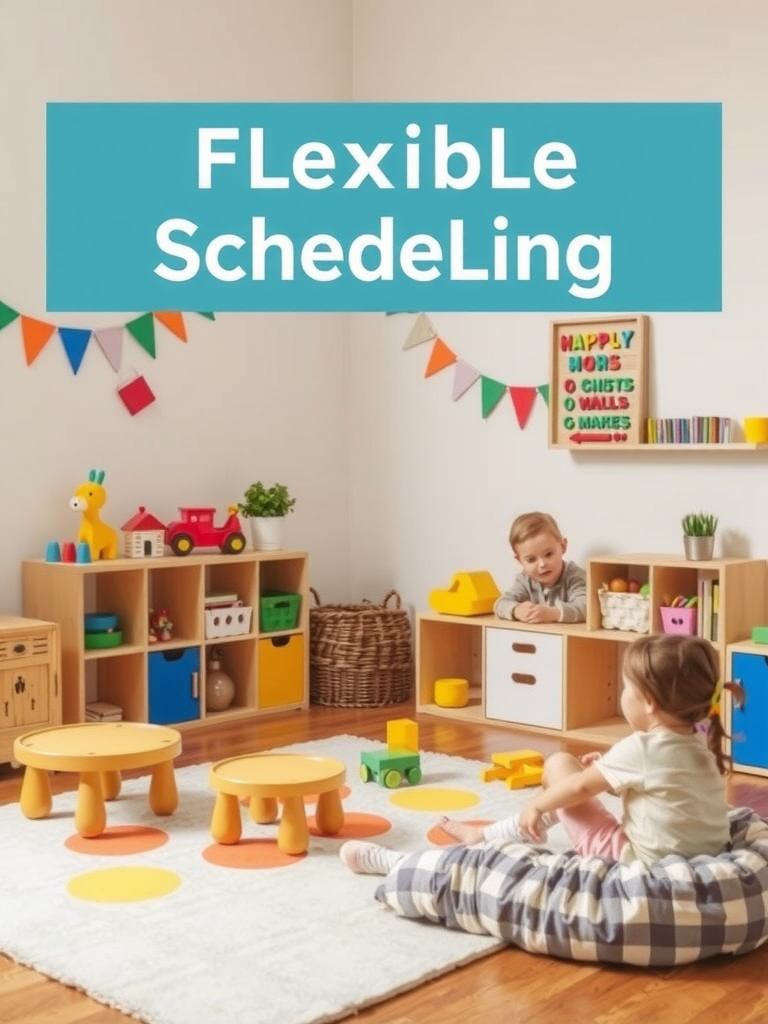
To make the most of a small daycare room, implement a flexible schedule that allows for different activities to happen at different times. By varying the types of play and learning experiences, you can manage space effectively while catering to the children’s diverse interests.
This approach helps in avoiding overcrowding in any designated area, making the small space feel less cramped and more inviting.
1. Soft Color Schemes
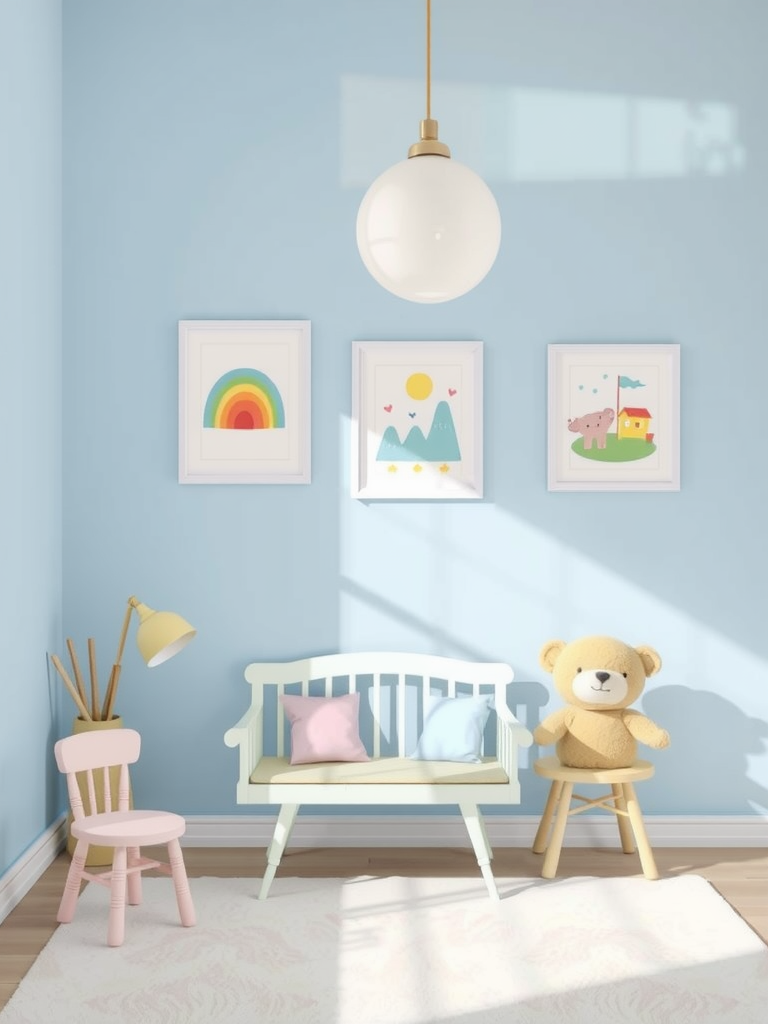
Using soft, pastel colors can create a calming environment for infants. Shades of light blue, soft pink, and pale yellow are visually appealing and help to soothe babies. Consider painting the walls in these tones to promote a peaceful atmosphere while also incorporating colorful artwork that can stimulate their developing senses.
Additionally, the use of soft colors can make the room feel welcoming to parents as well, creating a comforting space for drop-offs and pickups.
Conclusion
Designing an infant room for daycare requires careful consideration of safety, comfort, and stimulation. The ideas presented in this article can help create an inviting and engaging environment that supports the developmental needs of infants.
By implementing these innovative ideas, daycare providers can foster a nurturing atmosphere that not only meets infants’ physical needs but also encourages exploration and growth, laying a strong foundation for their future learning experiences.
Frequently Asked Questions
What are the essential features of an infant room in daycare?
Essential features include safe play areas, comfortable sleeping arrangements, soft furnishings, and interactive activities that promote development.
How can I ensure the safety of my infant in daycare?
Ensure the environment is free of choking hazards, that all furniture is securely anchored, and that caregivers are always supervising.
What should be included in a sensory station for infants?
A sensory station can include varied textures, sounds, and visual elements such as soft fabrics, rattles, and colorful toys.
How can an infant room promote language development?
Incorporating reading nooks, storytelling, and interactive play can help infants engage with language and develop communication skills.
What is the best way to organize an infant room?
Organize the space into distinct learning zones (e.g., play, reading, and art) while ensuring clear sightlines for caregiver supervision.

